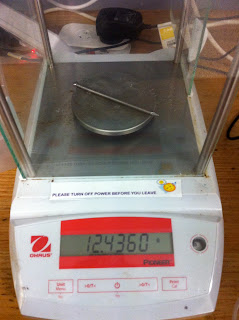The method was constructed, and final preparations for the investigation were made. It was decided that I would place 2x 5 Iron Nails and 2x 5 Aluminium Strips in the five different environments (Oxygenated water, deoxygenated water, salt water, warm water and cold water) and compare the two different metals, along with comparing the nails within those environments.
Method:
1.
Gather all required materials and equipment for the investigation and
label all testing equipment accordingly
2.
Place the 20 plastic cups and place them on a scientific tray
3.
Weigh the pieces of Aluminium, along with the Iron nails and record
their initial mass (in grams)
4.
Gather the ten identical iron nails and clean them using steel wool and
place each into a separate plastic cup
5.
Gather ten aluminium strips, also cleaning them with steel wool, and
place them into the remaining plastic cups
6.
Fill the cups half way full, filling each of the test tubes containing
the iron nails, with room temperature oxygenated water, with salt water (by
adding one tablespoon NaCl), with deoxygenated water (by adding two tablespoons
of Oil), with boiling hot water and cooler water
7.
Fill the cups half way full, filling each of the test tubes containing
the aluminium nails, with room temperature oxygenated water, with salt water
(by adding one tablespoon NaCl), with deoxygenated water (by adding two
tablespoons of Oil), with boiling hot water and cooler water
8.
Observe the colouring and structure of the iron and aluminium nails and
make note of its appearance each day, recording the changes that the metals are
going through
9. After 12 days remove the
nails from the solutions and weigh them. Record their finished mass and
calculate that as a % Mass loss of each nail.

























